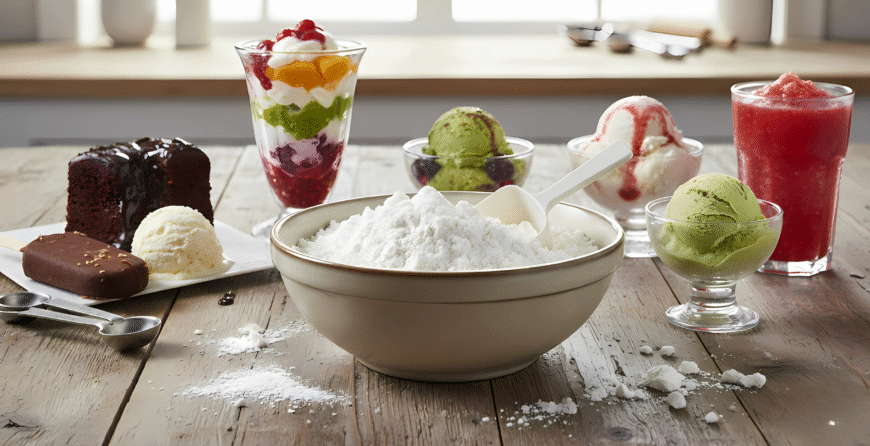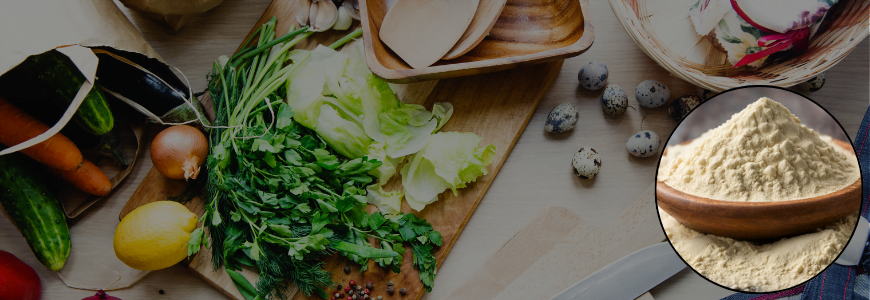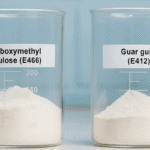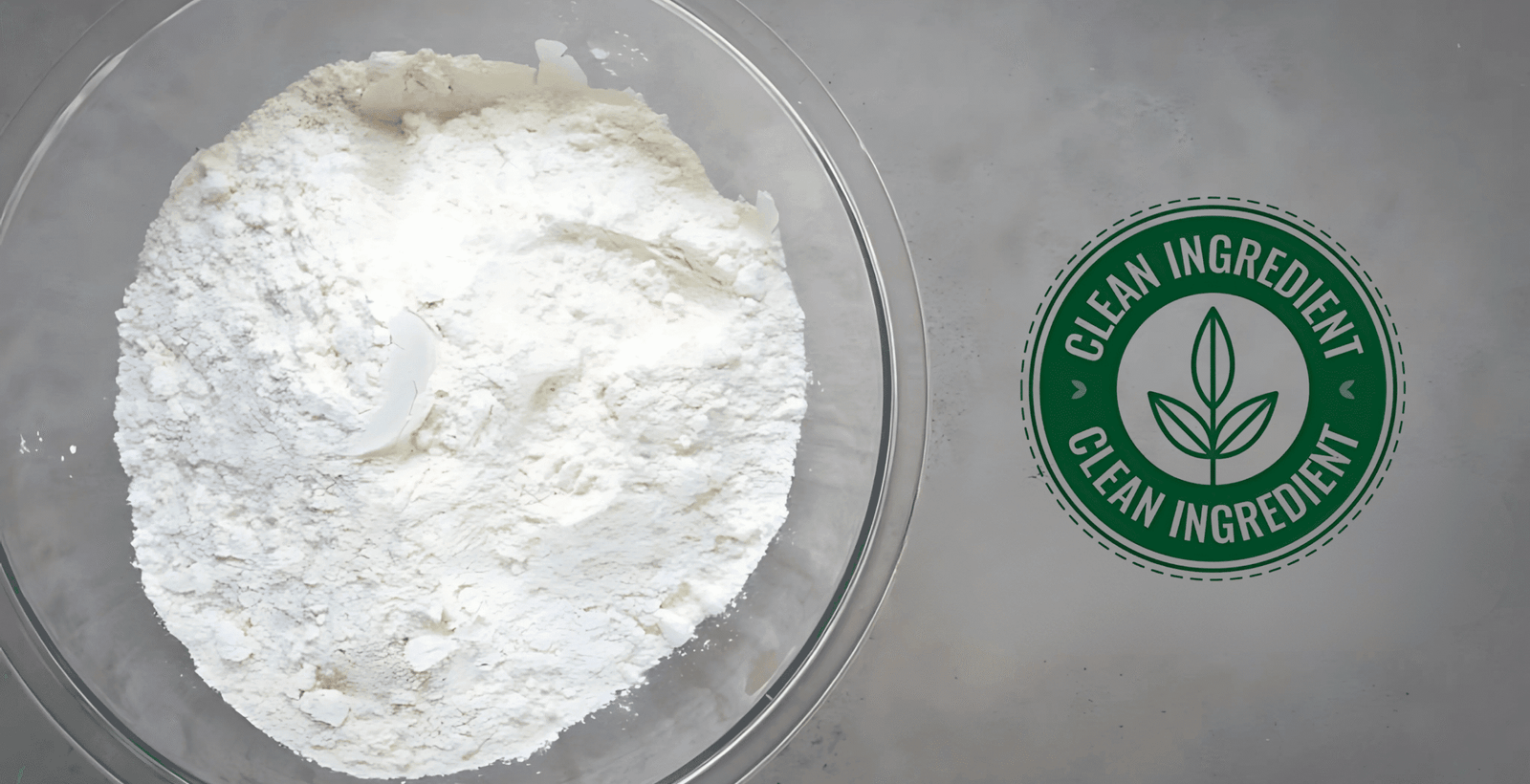When you think about frozen desserts like ice cream, gelato, frozen yogurt, parfaits, or slushies, what comes to mind first? Most people imagine creamy, smooth, and stable textures that melt slowly in the mouth. But behind this delightful experience lies a powerful natural ingredient – guar gum powder. In the modern food industry, this ingredient is becoming an essential solution to achieve creaminess, prevent ice crystals, and extend shelf life.
This blog explains how Guar Gum in Frozen Desserts plays a vital role in creating the perfect eating experience. We’ll explore its benefits, functionality, applications, and why food manufacturers rely on this natural stabilizer.
What is Guar Gum Powder?
Guar gum powder is a natural product made from the seeds of the guar plant (Cyamopsis tetragonoloba). It is primarily grown in India and Pakistan. After processing, the seeds produce a fine, off-white powder known as guar gum.
In the food industry, guar gum is valued as a natural thickener, stabilizer, and emulsifier. It is also known as E412, a permitted food additive. Its main function is to bind water, control viscosity, and improve the stability of food products, especially in cold and frozen applications.
Why Use Guar Gum in Frozen Desserts?
Frozen desserts face unique challenges. During storage and distribution, temperature fluctuations can cause ice crystal growth and textural changes. Without stabilizers, ice creams and similar desserts can become coarse, icy, or watery.
By adding Guar Gum in Frozen Desserts, manufacturers can:
1. Prevent ice crystal formation
2. Enhance creaminess and mouthfeel
3. Stabilize emulsions of fat and water
4. Improve freeze-thaw stability
5. Increase shelf life
6. Reduce melting speed
This makes guar gum an indispensable tool in producing consistent, high-quality frozen desserts.
The Science Behind Guar Gum Powder:
The secret of guar gum lies in its molecular structure. It is a type of galactomannan polysaccharide with high water-binding capacity. This means it can hold large amounts of water, even at very low concentrations.
When mixed into frozen desserts, guar gum powder thickens the liquid phase and slows down the movement of water molecules. This prevents ice crystals from becoming large and keeps the texture smooth.
In addition, guar gum interacts with proteins and fats, creating a stable matrix. This helps maintain the creamy body of desserts like ice cream, gelato, and frozen yogurt.
Applications of Guar Gum in Frozen Desserts:
Here are some frozen dessert categories where guar gum is commonly used:
1. Ice Cream:
Ice cream manufacturers rely heavily on **guar gum powder**. It controls the formation of ice crystals, improves viscosity, and ensures a uniform texture. With guar gum, ice cream melts slowly, giving consumers a longer-lasting creamy experience.
2. Gelato:
Unlike ice cream, gelato has lower fat content but requires a dense, creamy body. **Guar Gum in Frozen Desserts** like gelato helps achieve that perfect balance of softness and elasticity without compromising on texture.
3. Frozen Yogurt:
Frozen yogurt contains live cultures and less fat than ice cream. Adding guar gum powder improves body, prevents iciness, and stabilizes the delicate balance of proteins and fats.
4. Slushies and Sorbets:
Slushies, sorbets, and water-based frozen desserts often lack fat, making them prone to iciness. Guar gum helps create a smooth mouthfeel and prevents rapid separation of water and flavors.
5. Parfaits, Semifreddo, and Specialty Desserts:
Even in high-end desserts, guar gum ensures consistent structure, making it easier for chefs and manufacturers to maintain product quality.
Key Benefits of Guar Gum in Frozen Desserts:
Let’s dive deeper into the specific advantages guar gum offers:
1. Ice Crystal Control:
Without stabilizers, frozen desserts develop large ice crystals, leading to a gritty texture. Guar gum powder inhibits crystal growth, ensuring smooth and creamy products.
2. Texture and Mouthfeel:
Consumers demand indulgence in their frozen treats. **Guar Gum in Frozen Desserts** ensures rich, creamy textures, even in low-fat desserts.
3. Shelf Life Improvement:
Frozen desserts often travel long distances and sit in storage. Guar gum maintains quality during distribution by preventing separation and syneresis (water leakage).
4. Cost-Effectiveness:
Compared to other stabilizers, guar gum is economical. A small amount delivers powerful results, making it popular among food manufacturers.
5. Compatibility with Other Ingredients:
Guar gum works well with carrageenan, locust bean gum, xanthan gum, and other stabilizers. This allows manufacturers to customize blends for specific dessert needs.
Comparison: Guar Gum vs Other Stabilizers:
While other hydrocolloids like xanthan gum, carrageenan, and locust bean gum are also used, guar gum offers distinct advantages:
- Stronger water-binding ability than many alternatives
- Works well in low concentrations
- More cost-effective compared to locust bean gum
- Easy to blend with other stabilizers for better synergy
For these reasons, Guar Gum in Frozen Desserts remains the top choice.
The Role of Guar Gum in Low-Fat and Dairy-Free Desserts:
As the world shifts toward healthier and plant-based eating, demand for gluten-free, vegan, and low-fat desserts is rising. But reducing fat often reduces creaminess.
This is where guar gum powder shines:
- In low-fat ice creams, it mimics the creamy texture usually provided by fat.
- In dairy-free frozen desserts, it stabilizes plant-based milks like almond, soy, or oat.
- In gluten-free desserts, guar gum improves body and binding.
Thus, it supports the growing trend of clean label ingredients and healthy indulgence.
Why Manufacturers Prefer Guar Gum in Frozen Desserts:
Food manufacturers face intense competition. Consumers demand indulgence but also expect health benefits and clean labeling. Guar gum helps meet these expectations because:
- It is a natural thickener from a plant source.
- It is recognized as safe (GRAS) and approved worldwide.
- It supports clean label ingredient claims.
- It is cost-effective compared to other hydrocolloids.
- It is versatile, working in both dairy and non-dairy frozen desserts.
Technical Usage in Frozen Desserts:
1. Dosage: Usually 0.1% to 0.5% of the total formulation.
2. Method: Best added during mixing or pre-hydrated in warm water.
3. Compatibility: Blends with other stabilizers and emulsifiers for enhanced results.
The right dosage depends on fat content, sugar levels, and type of dessert. Excess guar gum may cause gumminess, so precision is key.
Market Trends for Guar Gum in Frozen Foods:
The global frozen dessert market is growing due to rising demand for premium, indulgent, and health-oriented products. At the same time, the guar gum powder market is also expanding as manufacturers look for natural, effective stabilizers.
- Consumers are demanding clean label ingredients.
- Vegan and plant-based ice creams are gaining popularity.
- Manufacturers prefer sustainable, natural additives like guar gum.
This synergy ensures that Guar Gum in Frozen Desserts will remain highly relevant in the future.
Potential Concerns and Safety:
Like any food additive, guar gum must be used responsibly. Excess usage can lead to overly thick textures. However, within approved levels, guar gum powder is safe, widely accepted, and beneficial.
It is also gluten-free, vegan, and non-GMO, making it suitable for all consumer groups.
Conclusion:
The journey from farm-fresh guar seeds to creamy frozen desserts highlights the power of nature in modern food science. By using Guar Gum in Frozen Desserts, manufacturers achieve perfect texture, stability, and consumer satisfaction.
Whether it’s preventing ice crystals in ice cream, stabilizing frozen yogurt, or improving the creaminess of low-fat desserts, guar gum proves itself again and again as a natural thickener and stabilizer.
In today’s world, where both indulgence and health matter, guar gum bridges the gap – offering smooth, creamy, stable desserts while keeping labels clean and consumer-friendly.
So next time you enjoy a scoop of ice cream or a spoonful of gelato, remember that behind its creamy perfection lies the humble yet powerful guar gum powder.
FAQs:
1. Why is Guar Gum in Frozen Desserts important?
It helps prevent ice crystals, keeps desserts creamy, and improves shelf life. Without guar gum, frozen desserts can become icy and watery.
2. How does guar gum improve ice cream?
In ice cream, guar gum prevents large ice crystals, giving a smooth and creamy mouthfeel. It also helps ice cream melt more slowly.
3. How does guar gum improve ice cream?
In ice cream, guar gum prevents large ice crystals, giving a smooth and creamy mouthfeel. It also helps ice cream melt more slowly.
4. Is guar gum safe to eat?
Yes, guar gum is safe and approved worldwide as a food additive (**E412**). It is also gluten-free, vegan, and non-GMO.
5. Can guar gum be used in dairy-free desserts?
Absolutely! Guar Gum in Frozen Desserts works well with almond milk, soy milk, oat milk, and coconut milk, making it perfect for vegan and dairy-free ice creams.
6. How much guar gum is used in frozen desserts?
Usually, only 0.1% to 0.5% of the total recipe is enough. Using more may make the texture too thick or gummy.
7. What is the difference between guar gum and xanthan gum?
Both are stabilizers, but guar gum is more cost-effective and excellent for cold applications like frozen desserts, while xanthan gum works better in acidic foods and sauces.
8. Does guar gum help in low-fat ice cream?
Yes! When fat is reduced, ice cream can lose creaminess. Guar Gum in Frozen Desserts replaces that lost creaminess and improves mouthfeel in low-fat desserts.
9. Is guar gum a natural or artificial ingredient?
Guar gum is 100% natural, made from the seeds of the guar plant. It is a popular clean label ingredient.
10. Where is guar gum commonly used besides frozen desserts?
Apart from ice cream, gelato, and frozen yogurt, guar gum is used in sauces, dressings, baked goods, beverages, and gluten-free products to improve thickness and stability.







